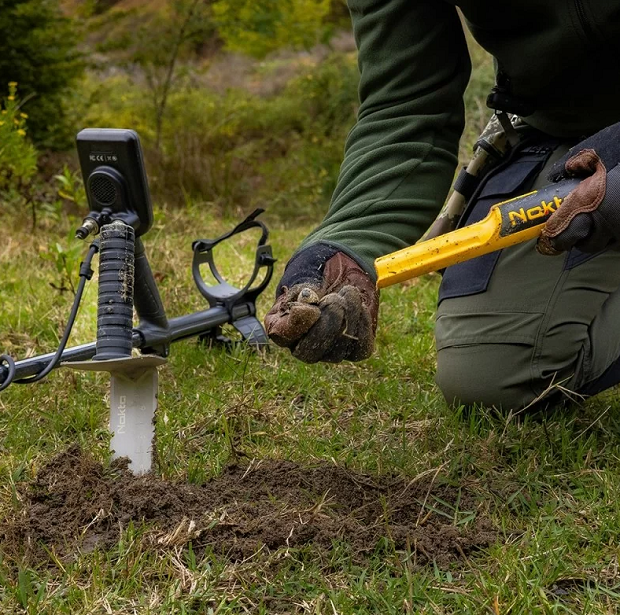Striking Gold: Tips for Picking the Right Metal Detector and Location Ideas
Metal detecting has become one of Australia’s most exciting outdoor hobbies, especially for those chasing gold. With a rich gold rush history and huge open landscapes, Australia is a prime location for prospecting. The first step in getting started with this new adventure is to buy a detector. And before doing so, you need to know the basics.
Important Things to Know
Not all metal detectors are created equal. If you’re serious about this and want to find real gold nuggets instead of coins, bottle caps or lost jewellery, you need to find the right detector for the job. Gold is most commonly found in highly mineralised soil. That’s why detecting can be much more difficult if you don’t have the right equipment.
Metal detectors are made to pick up small pieces of gold at different depths. They work at higher frequencies and have features that will help you differentiate between other metals and minerals. Even if you’re a beginner, there are devices with practical features that will help you find your first nugget.

Key Features to Look For
High Frequency
Gold detectors usually operate at higher frequencies (30 kHz and above). This helps them detect smaller nuggets that lower-frequency detectors might miss. With a high-quality, efficient metal detector, you’ll get the job done in no time. However, higher frequencies are more sensitive to ground minerals, which leads to the next key feature, ground balance.
Ground Balance
Australian soil is often full of minerals. That’s why people have issues finding the real stuff. They interfere with the search and prolong the process. If the detector you buy has good ground balance, it’ll minimise the mineral interference and focus on the gold nuggets. Go for models with manual or automatic ground balance settings, especially if you’re detecting in outback WA or Victoria’s Golden Triangle.
Discrimination Settings
It’s no secret that goldfields are filled with all sorts of “junk” metals. They contain rusty nails, bottle caps, parts of old machinery, and many more scraps. But with the discrimination feature, you can make your detection much easier. This feature filters out unwanted targets like these. You’ll stop wasting your time and digging up worthless items and focus on the real thing.
Coil Type and Size
The coil is the circular end of the detector that sweeps the ground. Smaller ones are more accurate and better at pinpointing small nuggets. They’re very effective in tight and rocky spots. Bigger coils are better for deeper nuggets and when you want to cover more ground. There are round and elliptical coils. The round ones usually provide better depth, and the elliptical ones are better at manoeuvrability.
Weight and Comfort
Prospecting is often about walking for hours and sweeping slowly and consistently over an area. That’s why you should get a detector that’s lightweight and has an ergonomic design. Holding something heavy for hours won’t be good for your back, shoulders, and arms. Other things that can make a big difference in your experience are adjustable shafts, balanced weight distribution, and padded handles.
Water Resistance
Some detectors are waterproof or have water-resistant coils, which is great for shallow creek beds or detecting near water. While full submersion isn’t always necessary, being splash-proof can be helpful in Australian environments.
Bonus Features
- Wireless headphones
- GPS tracking
- Customisable audio tones
Where to Go Gold Hunting in Australia
Once you know what type of detector to buy and what features you need, it’s time to decide on the location. Australia’s goldfields stretch across several states. All of them are unique and have their own history.
Victoria
This is the area between Ballarat, Bendigo, and Maryborough. It’s popular all over the world because of its gold finds in the past and in recent years. It’s great for beginners and experienced prospectors. There is a lot of public land and designated fossicking areas. To do some prospecting, you’ll need a permit, also known as a miner’s right. But it’s easy to get, you can do it online. So, grab your metal detector and go on an adventure.
Western Australia
WA has produced some of the biggest nuggets in the world. Some of the areas that attract thousands of prospectors each year are Kalgoorlie, Leonora, Cue, and Laverton. Once again you’ll need the miner’s right and also access to an open pastoral land or crown land. If you’re heading into the bush, be prepared with plenty of supplies and a 4WD because this is a remote country.
New South Wales
Hill End and Sofala in NSW are two historic towns with some of the oldest goldfields in the country. Nowadays, they have plenty of fossicking areas and camping spots. They’re perfect for solo adventures, family trips, and camping. Both of these towns are accessible from Sidney and perfect if you want a weekend trip.
Queensland
If you’re keen on prospecting in Queensland, you’ll need a fossicking license, and you have to stay at a designated area. One that stands out is Clermont. It has large available areas and a very welcoming local prospecting community. Gympie also has a rich gold history and is more accessible for coastal dwellers. Choose one of the metal detectors for sale and join the community.
Northern Territory
This is not a widely explored territory, but it has big potential for gold hunters. The Pine Creek goldfields offer excellent opportunities for more experienced adventurers. Make sure you do your research here because a lot of the land is under pastoral lease or Indigenous ownership.
Tips for Beginners
- Get the permits the state requires
- Research the area beforehand
- Start small in popular areas
- Practice in the backyard or a park
- Bring the essentials (water, food, sun protection, first aid kit)
- Stay safe with GPS and share your location.
